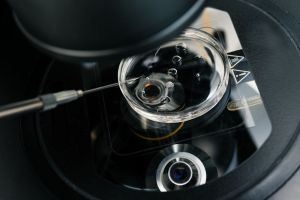
Many women decide to have their tubes tied once they are done having children. Medically known as tubal ligation, this procedure is an effective form of birth control. Sometimes, however, as women age or their circumstances change, they wish to have another child.
In vitro fertilization (IVF) is a fertility treatment available to women after tubal ligation. IVF is an assisted reproductive technology that completely bypasses the fallopian tubes, which makes pregnancy possible after tubal ligation.
Fertility specialists at Arizona Associates for Reproductive Health can help women in Scottsdale, Gilbert, AZ, and surrounding areas determine if IVF after tubal ligation is right for them.
Tubal ligation is a surgical procedure that blocks, cuts, or ties the fallopian tubes to permanently prevent pregnancy. This surgery prevents pregnancy by blocking an egg from traveling from the ovaries into the fallopian tubes, and blocking sperm from traveling up the fallopian tubes to an egg. Once a woman undergoes tubal ligation, her choices are very limited if she decides she wants to get pregnant. Essentially, a woman’s only options for getting pregnant after tubal ligation are IVF or a tubal ligation reversal.
Tubal ligations reversal surgery can be effective for some women who have previously had their tubes tied. However, surgical success is not guaranteed, and any surgical procedure carries a degree of risk. In most cases, we recommend IVF over tubal ligation reversal, because of the benefits it offers our Scottsdale patients.
If women choose to undergo IVF after tubal ligation, they should be prepared for what to expect during treatment. IVF is broken down into four basic phases: ovarian stimulation, egg retrieval, fertilization, and embryo transfer.
If you have undergone tubal ligation and would like to know if IVF can help you become pregnant, the fertility specialists at Arizona Associates for Reproductive Health would be happy to answer any questions you may have. To learn more about the fertility services offered at our center, send us a message online, or call our office at (480) 860-4792.